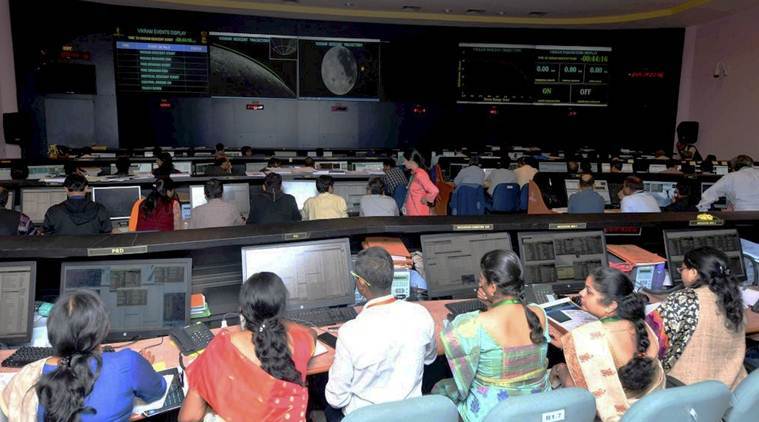Did India’s first moon lander Vikram crash on to the lunar surface resulting in the sudden snapping of the communication link with the Chandrayaan-2 Orbiter?
All was going well with the 1,471 kg Vikram that began its descent at about 1.38 am. on Saturday from an altitude of 30 km at a velocity of 1,680 metres per second.
Announcing the snapping of communication links, Indian Space Research Organisation (ISRO) Chairman K Sivan said that the performance of the lander was as per the plan till it was 2.1 km from the moon surface.
The communication link got snapped after that, he added.
In an official statement, the ISRO said: “This is Mission Control Centre. Vikram lander descent was as planned and normal performance was observed up to an altitude of 2.1 km. Subsequently communication from lander to the ground stations was lost. Data is being analysed.”
On the screen at ISRO’s telemetry, tracking and command network (Istrac) centre, it was seen that Vikram slightly changed from its planned path and then the communication link got snapped.
The lander was smoothly coming down with the ISRO officials applauding at regular intervals and their faces beaming with pride.
The lander successfully completed its rough braking phase with its descent speed going down well.
So what went wrong at the last moment?
According to an ISRO official, the lander could have lost its control when its thrusters were switched off during its descent and crash-landed snapping the communication links.
Meanwhile, all is not lost as far as the Rs 978 crore Chandrayaan-2 mission is concerned.
“Only 5 per cent of the mission has been lost – Vikram the lander and Pragyan the rover – while the remaining 95 per cent – that is the Chandrayaan-2 orbiter – is orbiting the moon successfully,” an ISRO official told IANS who did not want to be identified.
With a mission life of one year, the Orbiter can take several pictures of the moon and send it to the ISRO.
The Orbiter can also take pictures of the lander to know its status, he added.
The Chandrayaan-2 spacecraft comprised three segments – the Orbiter (weighing 2,379 kg, eight payloads), ‘Vikram’ (1,471 kg, four payloads) and ‘Pragyan’ (27 kg, two payloads).
On July 22, the Rs 978 crore Chandrayaan-2 was launched into the space by India’s heavy lift rocket Geosynchronous Satellite Launch Vehicle-Mark III (GSLV Mk III) in a text book style.
After five earth-bound orbit raising activities, Chandrayaan-2 was inserted into lunar orbit. On September 2, Vikram separated from the orbiter.





